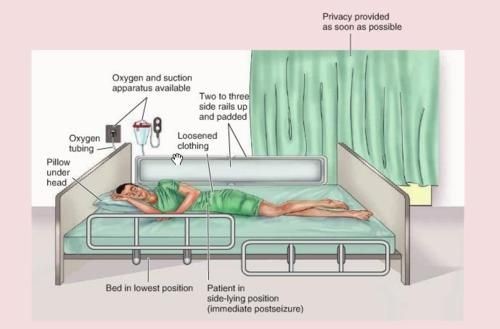A nurse is reinforcing teaching with a client who is scheduled for an intravenous pyelogram.
Which of the following statements by the client indicates an understanding of the teaching?
“I can have a meal up to 2 hours before the procedure."
"I will feel a warming sensation after the injection of the dye."
"I do not need to sign a consent form before this procedure."
"I should limit my fluid intake for 2 days after the procedure."
The Correct Answer is B
During an intravenous pyelogram (IVP), a contrast dye is injected into the client's veins, and X-ray images are taken to visualize the urinary tract. The dye used in an IVP can cause a warming or flushing sensation as it circulates through the body. The client's statement indicates an understanding of this common sensation associated with the procedure.
"I can have a meal up to 2 hours before the procedure": This statement is incorrect. Typically, for an IVP, the client is required to have an empty stomach before the procedure to ensure accurate imaging results. The client should follow the specific instructions provided by their healthcare provider regarding fasting before the procedure.
"I do not need to sign a consent form before this procedure": This statement is incorrect. Informed consent is required for most medical procedures, including an IVP. The client should sign a consent form after receiving all the necessary information about the procedure, its risks, and benefits.
"I should limit my fluid intake for 2 days after the procedure": This statement is incorrect. After an IVP, it is generally advised to increase fluid intake to help flush out the contrast dye from the body and prevent potential complications. The client should follow the specific instructions provided by their healthcare provider regarding post-procedure fluid intake.
Nursing Test Bank
Naxlex Comprehensive Predictor Exams
Related Questions
Correct Answer is B
Explanation
Lowering the side rails of the bed could lead to the client falling from the bed. Instead raise the side rails and place padding on them.
Measuring the seizure duration is a crucial step for medical evaluation afterwards necessary for determining intervention.
Inserting an oral airway into the client's mouth is not indicated during a tonic-clonic seizure. It is generally not recommended to place any objects or devices into the mouth of a person having a seizure, as it can potentially cause injury to the person or damage to the airway.

Correct Answer is A
Explanation
Promoting trust involves actions that build a sense of trust and rapport between the nurse and the client. In this scenario, the nurse recognizes the client's basic need for food and responds to it promptly and compassionately. By interrupting the bath to address the client's hunger, the nurse demonstrates attentiveness and care, which helps establish trust between the nurse and the client.
Countertransference refers to the nurse's emotional reaction or response to the client, which may be based on the nurse's personal experiences or unresolved issues. It does not apply to the nurse's action of obtaining a meal for the client.
Veracity refers to truthfulness and honesty. While the nurse's action can be seen as honest and caring, it does not specifically relate to the concept of veracity.
Boundary crossing refers to a situation where the nurse exceeds the established professional boundaries with the client. In this scenario, the nurse's action of obtaining a meal for the client can be seen as a minor deviation from the routine care but is not considered a significant boundary crossing.
Whether you are a student looking to ace your exams or a practicing nurse seeking to enhance your expertise , our nursing education contents will empower you with the confidence and competence to make a difference in the lives of patients and become a respected leader in the healthcare field.
Visit Naxlex, invest in your future and unlock endless possibilities with our unparalleled nursing education contents today
Report Wrong Answer on the Current Question
Do you disagree with the answer? If yes, what is your expected answer? Explain.
Kindly be descriptive with the issue you are facing.
